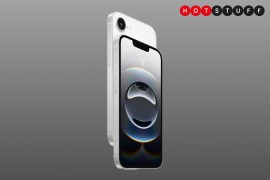Fit PC3 Pro review
This admirably tiny PC is encased in an aluminium shell that doubles as a heatsink – so there's no need for a fan. And that's not the only thing that's clever about it
Fit PC3 Pro – overview
Unless you’re planning on stereoscopic 3D gaming over three monitors, you don’t need a big tower PC any more. All the progress of the last few years has been about making components that are smaller, more energy efficient and cheaper without sacrificing computing power.
In mobile computing that’s led to ultrabooks, MacBook Airs and tablets. On the desktop, it means that the Fit PC3 can be a Mac Mini-baiting size with a solid, fanless design and yet still theoretically muster enough power to play the latest games. So is it any good?
Fit PC3 Pro – design and build
Thanks to a couple of WiFi antennas sticking out of the back, the Fit PC3 looks for all the world like a router rather than a PC – and it’s more or less the same size as most home network hubs too. It’s easy to distinguish, though, thanks to a vast number of USB ports dotted around its front and rear edges, and the fact that the body is a solid metal block with a set of fins sticking up from the top. While this makes the Fit PC3 weighty, there is a good reason for the rugged styling: the case doubles up as a heatsink, drawing warmth away from the CPU and dispersing it into the air without a noisy fan.
Fit PC3 Pro – performance
As a day-to-day work machine, the Fit PC3 is faultless. Compared to, say, an Atom powered nettop you’d never know you’re using a budget computer. It doesn’t even struggle with photo and video editing to any noticeable degree.
The only real performance bottleneck in general use is with the relatively slow hard drive, which can be swapped out for an SSD if you can afford it thanks to a removable bottom panel.
Even without an SSD the power efficiency of the Fit PC3 is astounding. At no point did it draw more than 20W in power – and more often than not it was ticking over at just 15W. For eco-types, that’s an exceptionally tempting feature.
Fit PC3 Pro – gaming
When it comes to playing games, however, is a slightly more complex affair. The overall experience is better than, say, trying to play on a Core i3-powered laptop, but still fairly disappointing. While we managed to get fairly complex games like Deus Ex: Human Revolution running smoothly, for example, it was only by using the lowest possible settings at 1366×768 resolution. Battlefield 3, by comparison, never got beyond PowerPoint-like framerates.
Part of that may be down to overheating. It doesn’t take long for the whole unit to get very hot when running the graphics processor flat out, which will slow things down.
Fit PC3 Pro – multimedia
Conversely, when it comes to watching video the Fit PC3 flies. Playback of 1080p content is flawlessly smooth, and because the machine itself is silent makes this a promising – if pricey – media centre. The secret is in the Radeon graphics chip, which is far better suited for decoding video than it is for gaming. What’s more, it’ll also kick in for video and photo-editing, too, so long as the software you’re using can be hardware accelerated (like PhotoShop et al). Pick the right programs and the Fit PC3 is a potent little workstation.
Fit PC3 Pro – connectivity
Getting the Fit PC3 up and running is ridiculously easy. The power supply is a mobile phone style wall wart, which just plugs into the back along with a HDMI cable and any peripherals you should need. There’s built in Bluetooth if you fancy a wireless keyboard and mouse to keep things tidy too. As with many other small form factor PCs, like the Zotac Zbox nano XS AD11, there’s even an optional VESA mount that lets you attach the Fit PC3 to the back of your monitor to create an extremely neat workstation.
Fit PC3 Pro – value
A basic Fit PC3 starts at less than £400 and looks like very good value, except that it comes without a hard drive or operating system. Adding storage and a copy of Windows takes the price up to that of a Mac Mini, which we really hoped it would steer clear of as it makes the whole thing that bit harder to recommend. It’s intensely likeable, and is quieter and considerably more stylish than – say – the latest Zotac Zbox XS AD11. But at the same time, it’s ultimately a more expensive version of the same machine.
Fit PC3 Pro – verdict
As a general workhorse, the Fit PC3 is brilliant – but it’s not quite brilliant enough to be worth over £500. There is, however, another option which is more attractive. If you’re not planning on using the Fit PC3 for Windows games, for example, you can opt for an identical model without the hard drive but with Linux Mint installed. Doing so will save you £120, and Mint – which is based on Ubuntu – is the most user friendly variant of Linux, and a very safe refuge for anyone who dislikes the bonkers mobile aspects of Windows 8 or OSX Mountain Lion. As a low cost second or third PC, that’s a clear winner.


